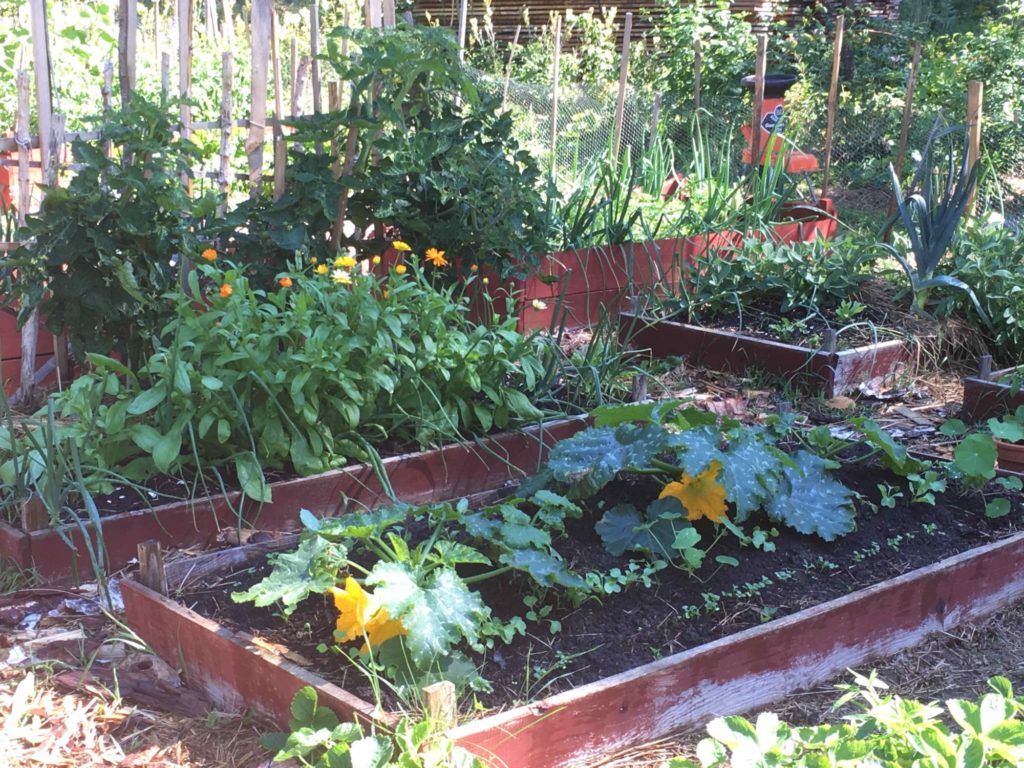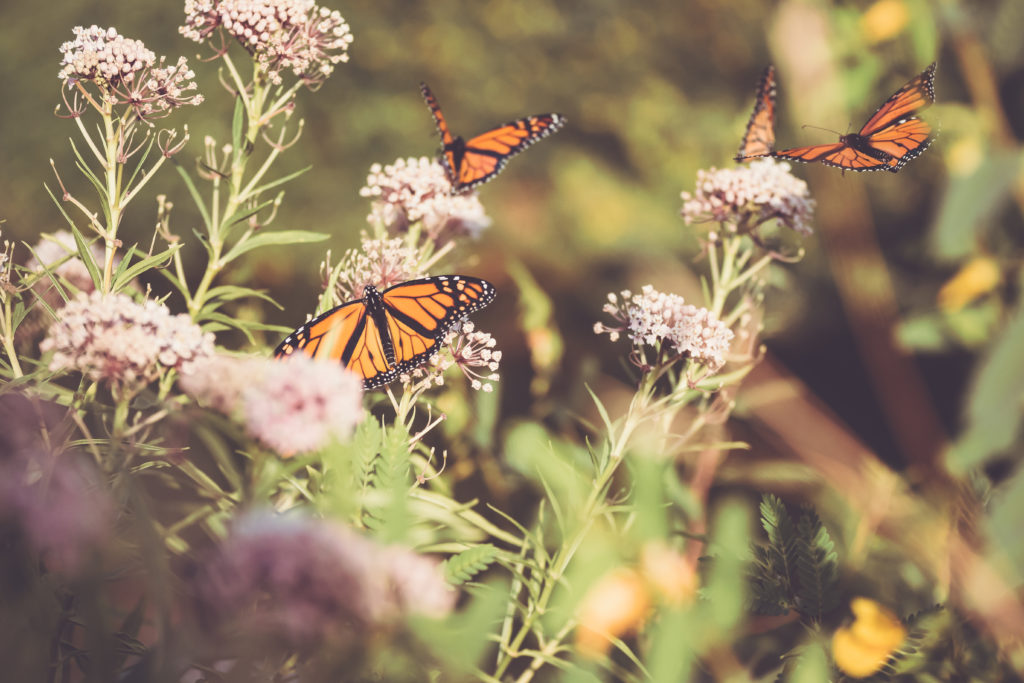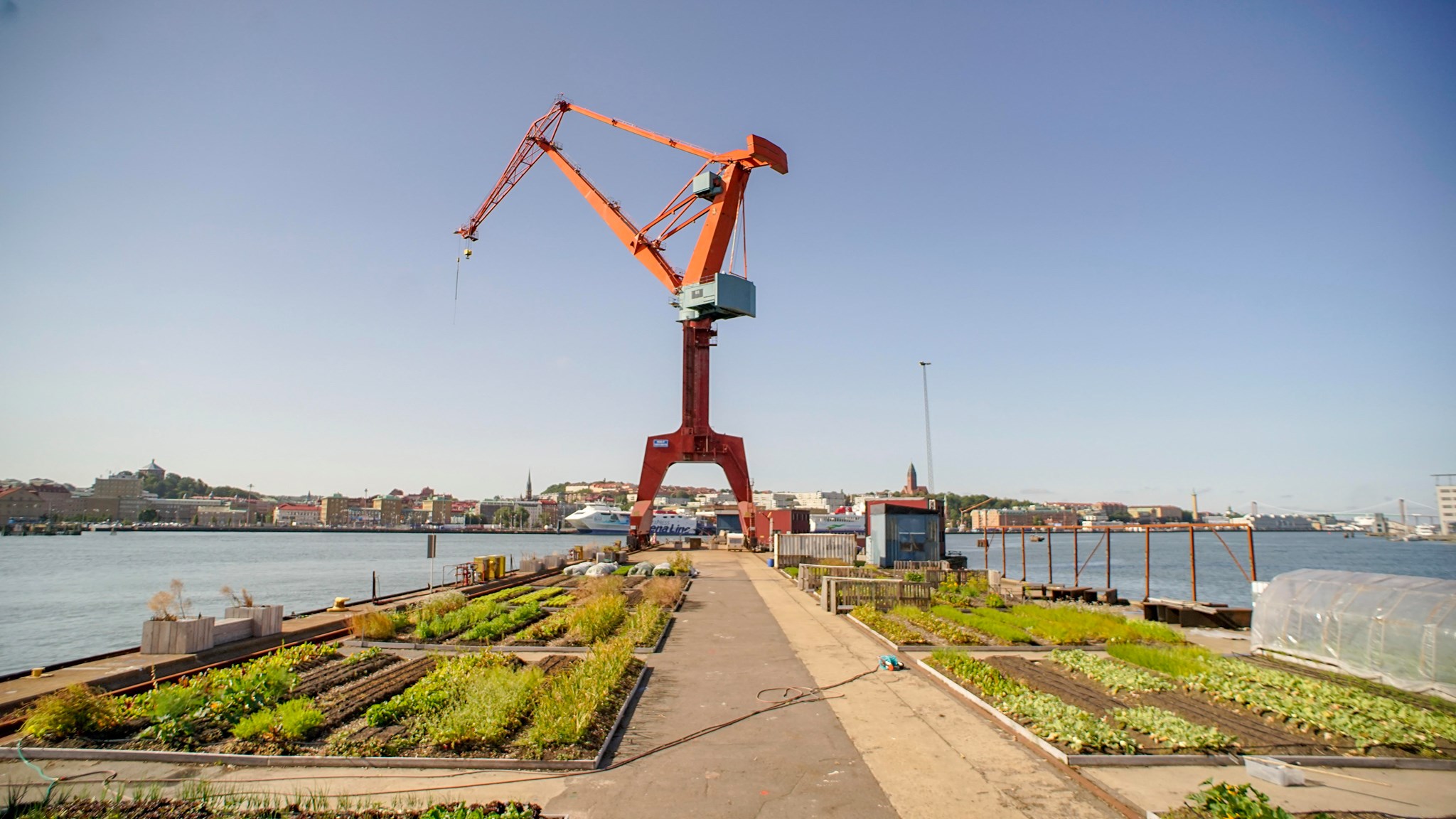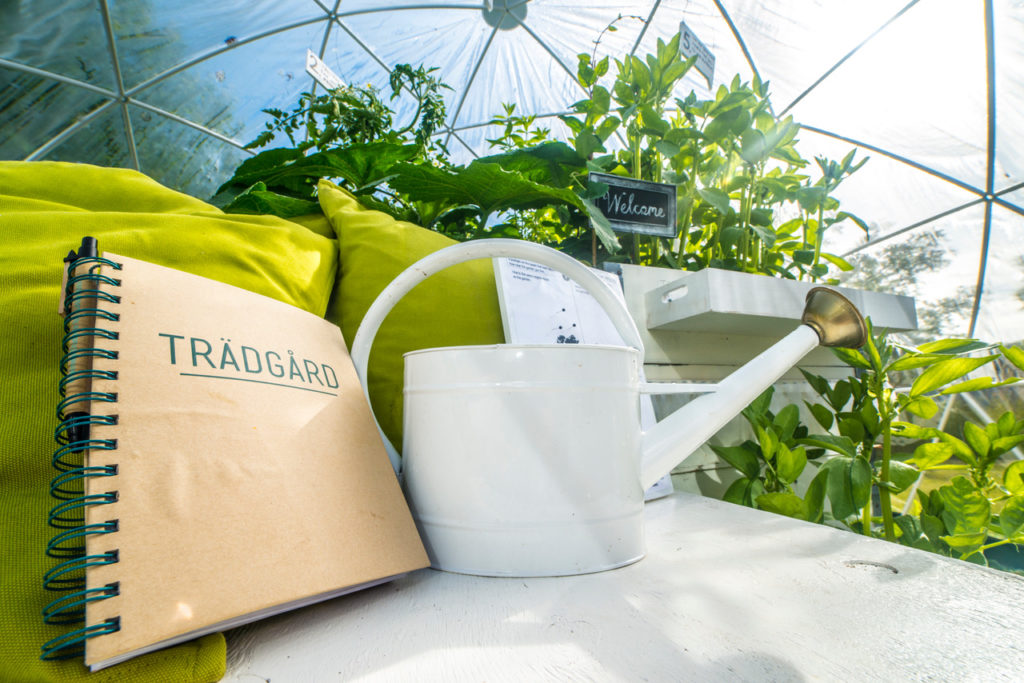
Your garden matters – for biodiversity and climate adaptation
Today, May 22, is Biodiversity Day. So to celebrate the day today we thought we’d talk about how you and I can create our own diversity gardens that also combat climate change and make us more resilient to the extreme weather we’ll be expecting in say 50 years. How can we adapt our cities, villages and communities to a changing climate? Imagine it’s May 2073 and it’s been 30 degrees now and drought for weeks, not a drop of rain. However, some cities have adapted but not all. What does this future city and countryside look like? And what can we expect with 3-4 degrees higher temperatures on average in Sweden – maybe even higher if we don’t manage to keep global warming below 2 degrees? In this blog post, Jonathan tells what he takes away from the basic course and gives 5 solid tips on how you can cultivate for increased biodiversity. How to build a climate-smart diversity garden simply!
(The picture above is from a Urban Farming Safari we arranged on Biodiversity Day a couple of years ago)
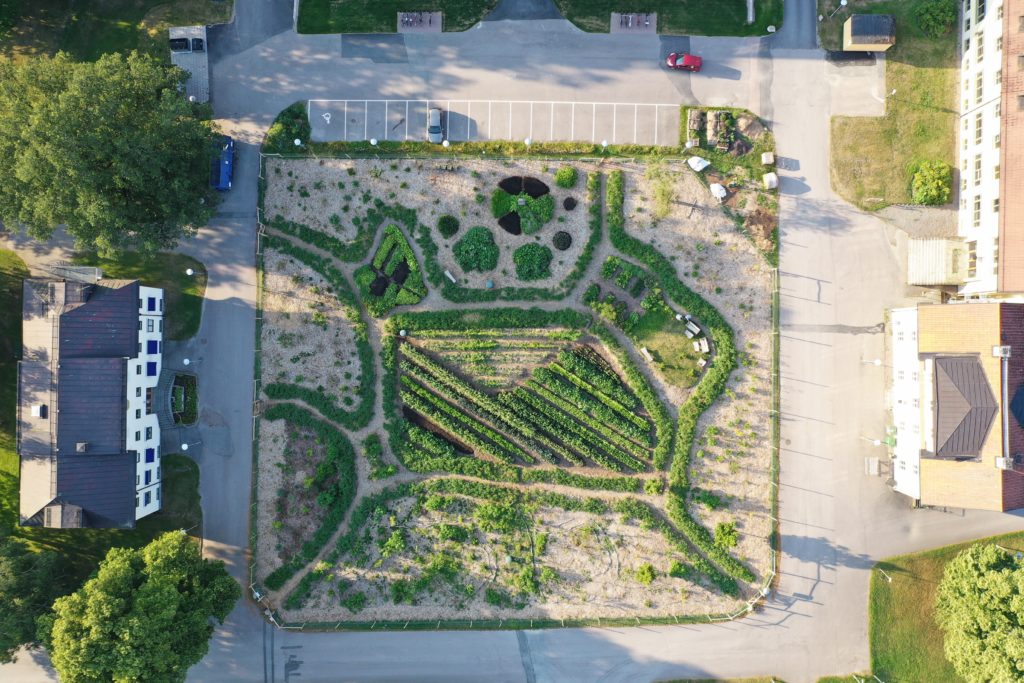
Ultuna’s food park – picture from Ultuna Pemakultur on their cultivation at the SLU Campus in Ultuna – A good example of a climate-smart diversity garden where many of the tips we share below have been used as a starting point. Read more here
Climate change and biodiversity
Did you know that we in Sweden can count on 3-4 degrees higher temperatures on average – even if global warming is limited to 2 degrees? What does this mean and what can we do? Jonathan was recently on SMHI’s basic course on climate adaptation and there the message was clear. More greenery and “nature-based solutions” – such as cultivation, green roofs and carbon storage in agricultural land are all ways to both counteract the loss of biodiversity and adapt to a changing climate with extreme rains and droughts, heat waves, etc. The fact is that biodiversity and climate adaptation are very much connected – both in terms of the challenges and the solutions. And your cultivation, whether you cultivate in the city or in the countryside, is an important part of the solution for increased biodiversity and resistance to heat, drought and torrential rain – yes, even a carbon sink that can prevent climate change.

Slaktarens trädgård – The butcher’s garden – a farm on the former asphalt “dessert” close to Gamlestads torg (in central Gothenburg) that adds both biological diversity and increased climate adaptation with better management of rain, drought and heat in the city.. Read more here.
Three things I take with me from the course in Climate adaption
- Sweden’s climate will be much warmer than the global climate (if the global temperature increases by 2 degrees, it increases by 3 degrees or in some areas even 4 degrees in the northernmost part of Sweden)
- Climate adaptation and climate mitigation (adapting to and preventing climate change) must go hand in hand. It is not enough to just reduce emissions, if we stop emitting tomorrow, we need to continue adapting society to a warmer climate for the next hundred years. This adaptation takes time so we need to start now.
- The solutions that are most cost-effective are natural solutions such as greenery and nature-based solutions that fulfill many functions. It will not help to build walls around cities that are at risk of flooding, these will have to be replaced in time and the city may still have to be moved in the end.
Biodiversity day – 22 Maj
Let’s celebrate all gardens!
A lot of research has shown that gardens in and around cities and urban areas contribute a lot to higher biodiversity. A lawn and “ordinary park” comparatively does not have as much diversity as a garden plot or plot with flowers, trees, shrubs and crops. In addition, a vegetable farm or forest horticulture can create a net carbon sequestration if done correctly. Something that both strengthens life and diversity in the earth, and also contributes to slowing climate change at the same time as we adapt to a climate with more drought and torrential rain. More carbon in the soil means more humus which holds more water in both dry and wet periods and thus reduces the risk of flooding and drought (which are often linked and due to poor marine filtration and absorption in the soil). Building soil, loamy soil, is thus an important part of the solution to how we adapt our societies to a warmer climate – and we get higher diversity and carbon storage at the same time. Personally, I would like to see a shift to regenerative agriculture on large areas in Sweden, but apart from this, even the small patch has a great significance.
[Abbreviated quote from Swedish gardening profile John Taylor during the spring in an interview on SVT’s program Sverige (April 14).]“Gardening as a social engine in society is gigantic. There are millions of people who garden and yet it is considered a small hobby. We are responsible for food production, landscape care and a greater part of the biological diversity in society”
How to build a “climate smart” biodiversity garden:
Here are 5 tips from Jonathan – architect and community planner with specialization in cultivation and food production,
- Start digging where you stand:
Do you own a piece of land? Think about what you want with the surface. Perhaps you can invite more people to create your or someone else’s dream garden. Share farmable land on Grow Here if you want to find growers to take care of all or part of the garden or list an existing farm or garden if you are looking for someone who can help and be part of your garden dream or your cultivation initiative.
If you don’t own a piece of land/garden… Search among available cultivation areas and cultivations on Grow-Here.com/discover or ask the neighbor or the municipality, the BRF or those who take care of the green areas near you where you would like to grow. You don’t have to own the land to farm here, often the owners are happy if it is put to better use and can also have higher diversity, aesthetic values and withstand extreme weather better.
- Cultivate the soil, then the plants also thrive
It all starts with a healthy soil with a lot of soil (humus) which consists of 50% carbon, which can hold 20 times its weight in water and thus makes your garden able to withstand both drought and extreme rain. In addition, the humus content increases the food for all life in the soil, which provides food for all plants – which provides food for us. So build a healthy and humus-rich top soil and the plants will thrive in return. Regardless of whether you have sandy or clay soil, it will be “better” with more organic matter (mulch).
You can read more about how to convert grass into cultivation without digging here
- Grow the things you eat, things you enjoy – and what likes to grow there
– Grow what you eat – which vegetables, herbs, berries/fruits and perhaps perennials you don’t have to sow every year.
– Flowers you like to pick that can attract beneficial animals and look beautiful.
– Shrubs and trees that can provide fruit, flowers and both food/habitat for wild animals/insects.
– Co-planting: Dare to mix and combine edible and beautiful, and take advantage of the benefits of co-planting. More on that in this premium article. - Cultivate smart: Serial cultivation, pre-cultivation
– Serial gardening means that you use all free surfaces in time and space and pre-cultivate what you intended to plant so that it is ready just in time for the surface to become empty. A good tip is to make a cultivation plan to know what you need and when to fill all the gaps in the cultivation over the season.
More on that in our premium article on how to become self-sufficient in vegetables.– Pre-cultivate if you grow edible annual crops – get tips on when you grow what in our growing calendar for April and May.
You can also read more about cultivation in our previous blog post about cultivation indoors and outdoors. - Last but not least – Enjoy and dare to be lazy!
– Dare to be a lazy worm in the garden and don’t create more work for yourself than necessary. Lay down in the hammock or on the lawn and take in everything that happens. Notice how clever nature is at solving things you yourself thought you needed to solve.
– Enjoy observing what works well in which places and invest in what you get the most out of around what means something to you. Maybe it’s food, maybe a beautiful place, maybe just a chore that relaxes you.We have made a series of videos where we share more cultivation tips in brief with a small challenge you can try yourself. Here you can e.g. learn more about pre-cultivation, solar studies for vegetable garden placement, green fertilization, interplanting and much more. See the playlist on youtube and the first video via the link below:
I wish you all a nice spring and summer in the unusual May heat and good luck with your farming and gardening dreams and goals for this season!
Sunny greetings,
Jonathan Naraine
Architect, grower and food system designer
Co-founder, Grow Here platform
Planning architect, Skara municipality
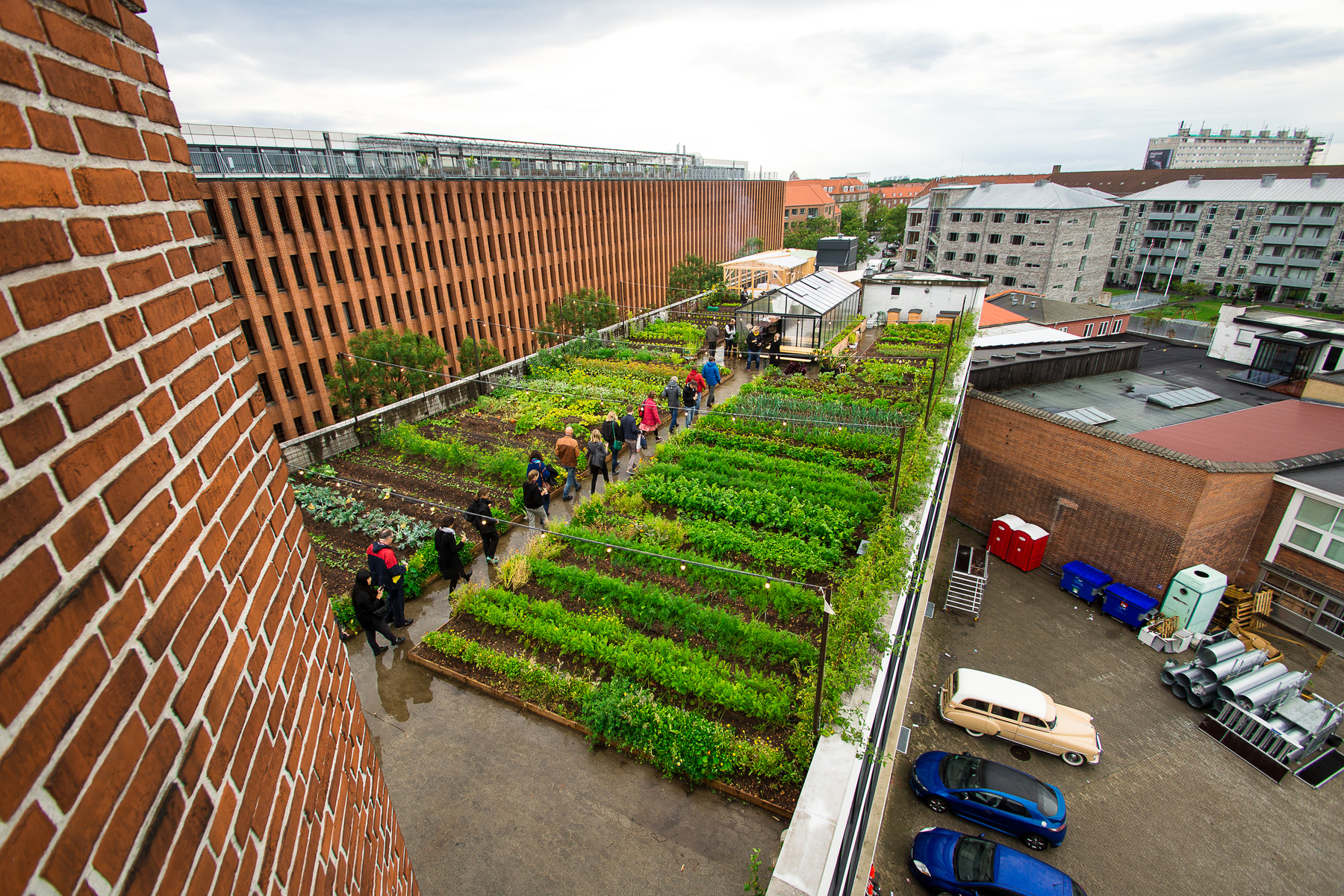
Pioneering Nordic urban farms in Oslo & Copenhagen! (Videos: Virtual urban safari)
Nordic urban farms
Did you know know that Gothenburg is one of the pioneering cities when it comes to urban farming in Europe. But we are not alone. A lot is happening also in Denmark and Norway and their urban areas and in this article we will explore the pioneering nordic urban farms on rooftops, unused buildings and other urban areas that you might not expect in Copenhagen and Oslo. Jonathan made some visits and will take you on a virtual urban farming safari to these Nordic urban farms!
Østergro, Copenhagen – Roof top farming on a previous parking lot!
Meet Livia, cofounder of ØsterGRO, Denmarks first rooftop farm. Learn about their farm and interesting model of CSA – Community Supported Agriculture! In the summer of 2018 Jonathan went to Copenhagen for the Terra Madre Nordic conference and there he met Livia from ØsterGRO and did a spontanoues interview about their amazing rooftop farm and their new CSA concept called FællesGro.
Wanna know more? Check out the ØsterGRO rooftop farm on facebook here and read more about the CSA on the website of FællesGro.
Olso – an urban farming pioneer thanks to policy
What else is happening on urban farming in the nordic countries. Well as a member of the grow Gothenburg community you know Gothenburg is a pionering city when it comes to urban agriculture but a lot is actually happening in Norway and Oslo in specific. In fact they had a political mission to increase urban farming much like Gothenburg and a very succesful policy that meant that all new housing developoment needed green roofs that were actually having deeper soils allowing for urban gardens rather than just sedum roofs. This was done to be able to work with climate adaptation as green roof top with deeper soils can catch and harvest water and slow down the flows of storm water during heavy rains which will benefit the whole city. Olso became a pioneer thanks to top down policy in combination with bottom up initiatives and in the video below I explore and visit some of the pioneering urban farms.
Join us on a virtual urban farming safari in Oslo!
Here comes a short video with some clips from a visit and urban farming tour in Oslo – who won the European green capital of the year in 2019 when we visited these farms. Visits include “Tak for Maten” by Nabolagshager, Tåsen Microgreens, Losæter urban farm i Bjørvika and the new rooftop farm at Clarion Hotel “The Hub” – one oof many urban farms on rooftop developed thanks to the new policy for green roofs.
Wanna learn more?
Find out more about Oslo’s urban farms on the fb-page “Spirende Oslo”: https://www.facebook.com/spirendeoslo/
If you want to check out the urban farms established in Gothenburg in the spring of 2019, mentioned in the last video, here are their instagram profiles:
- Slaktarens trädgård – (find there instagram page here)
- Färgsakslandet (insta page) (currently transformed into a garden collective called Stalltäppan)
The farms were created and matched due to the Grow-here.com and our landsharing platform (in partnership with property owner Higab). Here property owners can share unused land and growers can find their dream plots. Read more about this pilot project with Higab in this article.
Hope you got some urban farming inspiration from our closest cities in the nordic countries.
Happy Gardening!
Jonathan
Grow Here
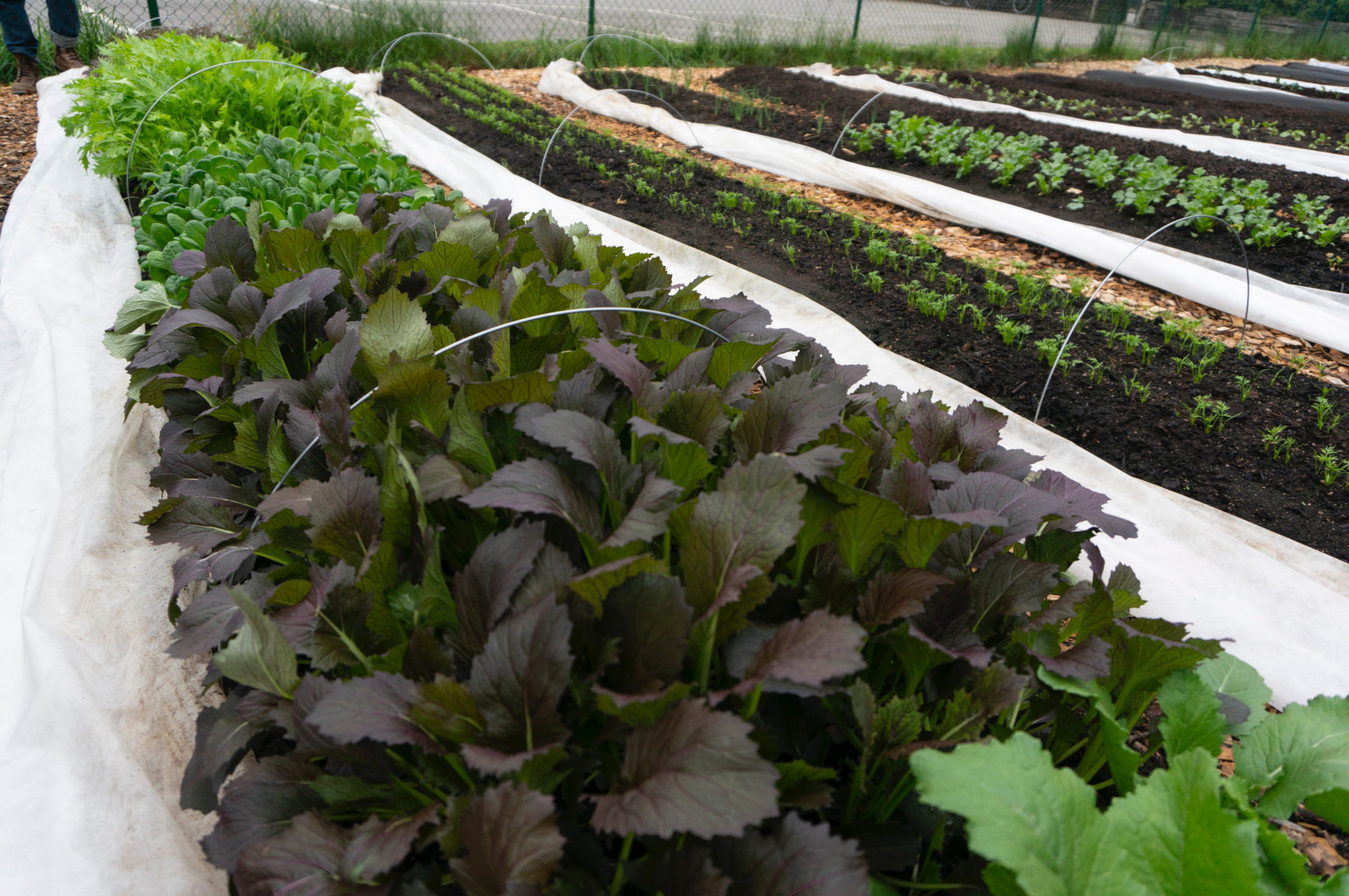
Find volunteers & members to your farm!
Are you running an urban or small-scale farm and looking for members or want to reach out with an event? Add your farm on Grow Here – a platform and map that brings together the local farming movement. Here you can list your growing association or local farming company and find volunteers, members or customers – and spread your farming courses and events.
Why add your farm or event on the Grow Here map?
At Grow Here, the farming movement is gathered on one map and your farm becomes visible to a wide range of potential members, costumers and visitors. Here you can list your farming initiative, whether it’s a garden association or an urban farming company. Communicate if you are looking for volunteers, members or if you sell your produce. You can also list your events and courses so that it appears in our online calendar.
Your farm becomes searchable on the map and is often seen high up in search engines. Perhaps your farm will be found by someone who otherwise would not have heard of you.
5 reasons to add your farm on the map:
-
Reach out to your local farming community:
Grow Here reaches out to tens of thousands of local farming enthusiasts every year. Sharing your farm or event is also entirely FREE! Your listing on Grow Here will be like a website in mini format that is visible on the map.
-
Advertise if you are looking for new members or volunteers:
You will then be seen in search results for those who are looking for volunteer positions or want to become a member of an association, and interested people can contact you through a custom form. Your site on Grow can thus serve as a platform for receiving applications or inquiries.
-
Do you sell what you grow? Tell people where and how to buy your food!
At Grow, we make it easy to find which local growers sell vegetables. Link to any website and inform about your sales channels. You may be selling weekly CSA vegetable boxes or through a local food node or drop-off site, add the links here.
-
Advertise your course or event:
Add your event under “my events” and it will appear in Grow Here’s event calendar. Maybe you arrange courses and study visits to spread knowledge, create networks or extra income for your farm. We can help spread the word in our channels and upcoming newsletters.
-
Inform about your services:
On your farm listing you can let people know about the different services your farm offers. F.ex. you can inform that your farm is open to study visits, that you offer lectures and courses etc.
Pick up your phone and help the movement grow – add your farm today!
How to add your farm? Well, it’s easy. This is how..
Adding your farm or event in 3 steps:
-
Add a listing
It’s free and easy to add your farm or event as a listing. Create an account or log in to www.grow-here.com.
Click “Add farm” or “Add event” in your profile. Add a short title, text and appropriate pictures.You can also write about your specific services such as where you sell vegetables or work days at the farm. When you add a course or event listing, write the date/time, place and requirements.
-
We publish your listing and spread the word
We will review and publish your listing and notify you as soon as your farm or event is published. A selection of farms and events are also highlighted in our network and on social media to spread the word about what is happening to our community.
-
Get in touch with interested growers or customers
When your farm or event is published, growers or customers can send messages with inquiries or applications with a little more information about themselves, education, experience and interests. Then you decide which growers you want to choose. Happy growing!
Below is a link to post farms or events. NOTE: You must be logged in and create an account first for the link to work.
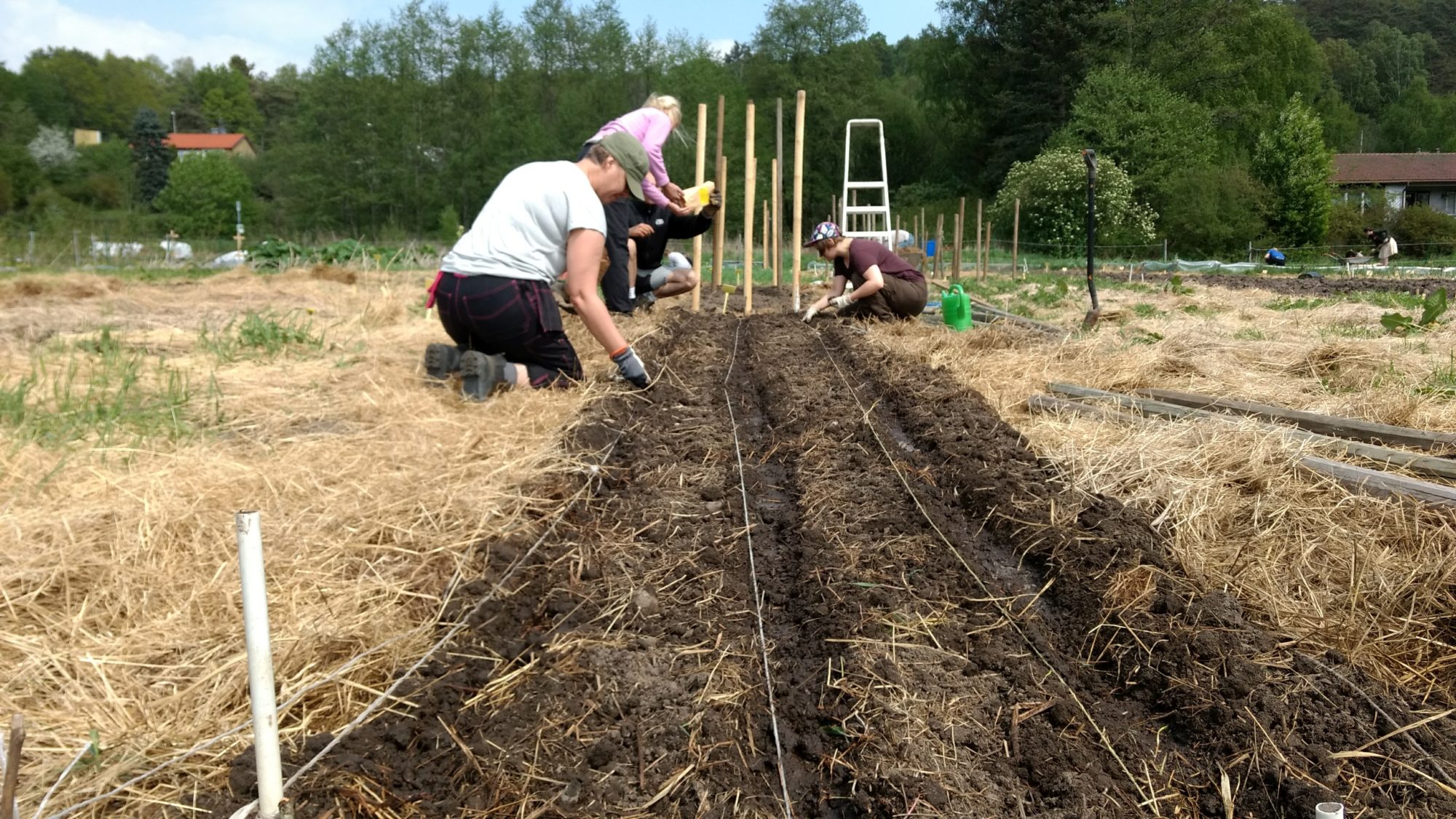
Tillsammansodlingen in Mölndal – one community farm listed on the Grow Here map
What is the difference between farm and land listings?
- When you add a farm listing on Grow, the pink category, you show that your farm is already existing and the listing has more choices – here you can inform about what you grow, opportunities to volunteer or buy vegetables from the farm. If you tick the boxes “Sell produce”, your farm will be visible in the search results when users are looking for farms to buy local food from.
- If you add a land listing area, the green category, you show that you have land to offer or share for others to grow on. If you add a “land” listing, it will be shown in search results for users interested in finding farmable land. If you are an existing farm or have a farm with land that is in search of more people who can grow on site – you may very well list your listing in the “land” category.
Read more about sharing farmable land here in “Landsharing – How does it work?“.
Together we gather the farming movement and make more dreams grow!
Read more about how to map the farming movement in your city in this article
Warm regards,
The Grow Here team
